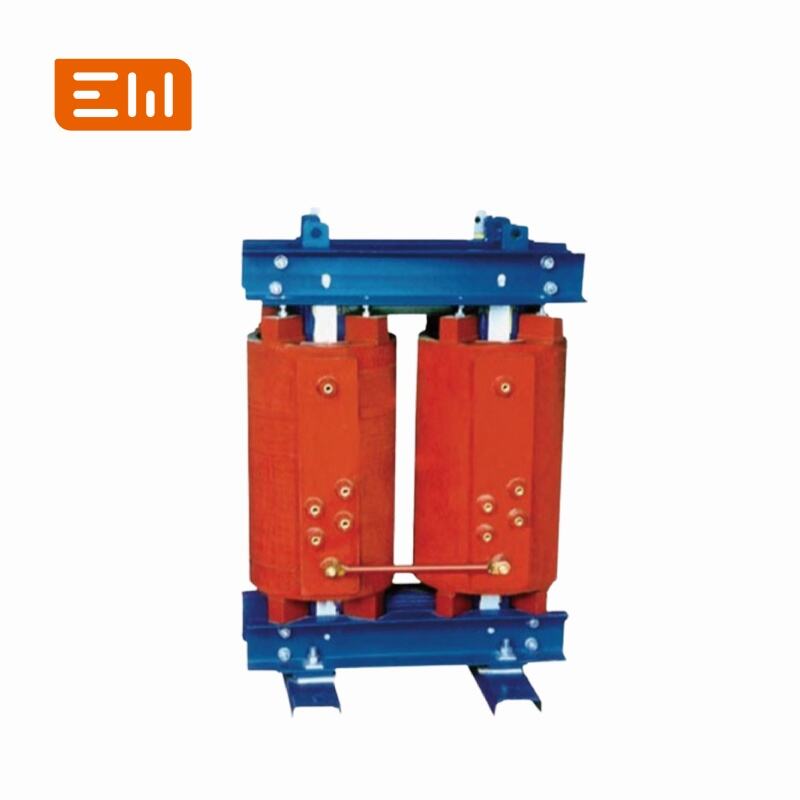The Importance of Impedance in Dry Type Transformers
On a dry type transformer's nameplate, among the primary specifications like kVA and voltage, you will find a value for percent impedance (%Z). While it may seem like an obscure technical detail, impedance is a critical parameter that profoundly impacts system protection, performance, and design.
This guide explains what transformer impedance is and why it is so important for your electrical system.
What is Transformer Impedance?
In simple terms, transformer impedance is a measure of the opposition to current flow through the transformer. It is determined during a short-circuit test at the factory and is expressed as a percentage of the rated voltage. For example, if a transformer has an impedance of 5% (%Z = 5), it means that when a short circuit occurs on the secondary side, the voltage drop within the transformer is 5% of the rated voltage.
A lower impedance means less opposition to current, while a higher impedance means more opposition.

Why Impedance is Critically Important
1. Fault Current Calculation
This is the most critical role of impedance. The impedance value determines the maximum fault current (short-circuit current) that the transformer can deliver. The formula is simple:
Max Fault Current = (Full Load Amps) / (%Z / 100)
Let's look at an example:
- A 1000 kVA transformer with 5% impedance can deliver a maximum fault current that is 20 times its normal full load current (1 / 0.05 = 20).
- A 1000 kVA transformer with 2.5% impedance can deliver a maximum fault current that is 40 times its normal full load current (1 / 0.025 = 40).
This calculation is essential for the proper sizing of all downstream protective devices, including circuit breakers, fuses, and switchgear. If the protective gear is not rated to handle the available fault current, it can fail catastrophically during a short circuit.
2. Voltage Regulation
Impedance affects how much the transformer's output voltage "sags" or drops as the load increases. A transformer with a higher impedance will experience a greater voltage drop under load than a transformer with a lower impedance. While some voltage drop is normal, excessive drop can cause problems for sensitive electronic equipment.
3. Paralleling Transformers
To increase capacity or provide redundancy, two or more transformers are sometimes connected in parallel. For this to work correctly, the transformers must share the load in proportion to their kVA ratings. A key requirement for successful paralleling is that the transformers must have very similar impedance values.
If the impedances do not match, the transformer with the lower impedance will take on a disproportionately large share of the load, leading to overheating and a potential overload, while the higher-impedance unit remains under-loaded. The general rule is that impedances should be within ±7.5% of each other for successful parallel operation.
Standard Impedance Values
Impedance is not an arbitrary number; it is carefully chosen by the design engineer to balance fault current limitation, voltage regulation, and manufacturing cost. While custom impedances are possible, most https://www.enweielectric.com/products/transformers/dry-type-transformers">dry type transformers are built with a standard impedance value, often in the range of 4% to 8%.
Conclusion: A Critical Design Parameter
Transformer impedance is far more than just a number on a nameplate. It is a fundamental design characteristic that dictates how the transformer will behave within your electrical system. It is the key to coordinating your protection scheme, ensuring stable voltage, and safely paralleling units.
When replacing an existing transformer or designing a new system, ensuring the impedance value is correct for the application is a non-negotiable step for a safe and reliable power system.
If you have questions about the right impedance for your project, https://www.enweielectric.com/contact-us">contact the engineering team at Enwei Electric. We can help you select a transformer with the precise specifications to ensure perfect system integration.

